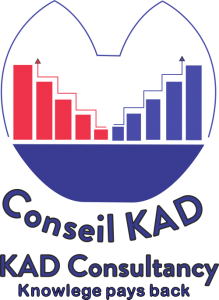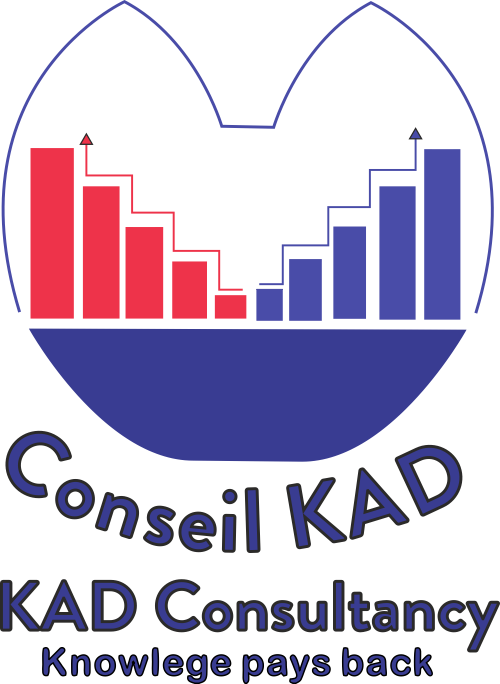Canada Pension Plan (CPP) Contribution Rates
| Year | Maximum Pensionable Earnings (YMPE) | Rate | Employee/ Employer Maximum | Self- Employed Maximum |
| 2019 | $57,400 | 5.10%(1) | $2,748.90 | $5,497.80 |
| 2018 | 55,900 | 4.95% | 2,593.80 | 5,187.60 |
| 2017 | 55,300 | 4.95% | 2,564.10 | 5,128.20 |
| 2016 | 54,900 | 4.95% | 2,544.30 | 5,088.60 |
| 2015 | 53,600 | 4.95% | 2,479.95 | 4,959.90 |
| 2014 | 52,500 | 4.95% | 2,425.50 | 4,851.00 |
| 2013 | 51,100 | 4.95% | 2,356.20 | 4,712.40 |
| 2012 | 50,100 | 4.95% | 2,306.70 | 4,613.40 |
| 2011 | 48,300 | 4.95% | 2,217.60 | 4,435.20 |
| 2010 | 47,200 | 4.95% | 2,163.15 | 4,326.30 |
| 2009 | 46,300 | 4.95% | 2,118.60 | 4,237.20 |
| 2008 | 44,900 | 4.95% | 2,049.30 | 4,098.60 |
| 2007 | 43,700 | 4.95% | 1,989.90 | 3,979.80 |
Note: The basic annual exemption is $3,500. The self-employed rate is 2x the employee rate.
(1) CPP Contributions on the Tax Return
The employee maximum for the non-refundable tax credit for CPP premiums will be ($57,400 – $3,500) x 4.95% = $2,668.05.
The remaining amount of the maximum, $2,748.90 – $2,668.05 = $80.85 (also = ($57,400 – $3,500) x 0.15%), is allowed as a deduction from income, not as a tax credit. See Enhanced Canada Pension Plan below.
In the Detailed Canadian Income Tax Calculator for 2019, the total CPP + Enhanced CPP for employment income is shown near the bottom of the calculator, in the calculation of Total taxes, clawbacks, CPP/EI premiums. Since the CPP on self-employment income is calculated on the tax return and remitted in the same manner as income tax, it is shown separately and included in the total payable by the taxpayer.
Starting in 2019, there is an additional contribution of 0.15% x the YMPE, which is included in the 5.10% above. This is called the “first additional contribution” for the Enhanced CPP. On the tax return, the additional contribution will be allowed as a deduction. Employers will also pay the 0.15% additional contribution. Self-employed will pay both the employee and employer additional contributions, and will be able to deduct 100% of the additional contribution on their tax return. The first additional contribution will increase each year, so that in 2024 the total rate will be 5.95%, as follows:
2019 0.15% +4.95% = 5.10% total rate
2020 0.30% +4.95% = 5.25%
2021 0.50% +4.95% = 5.45%
2022 0.75% +4.95% = 5.70%
2023 1.00% +4.95% = 5.95%
In 2024 there will be an additional maximum pensionable earnings (YAMPE) calculated, which will be 107% x the YMPE. In 2025 the YAMPE will be 114% x the YMPE. The contribution amount (2nd additional contribution) will be 4% of the difference between the YAMPE and the YMPE. Self-employed will pay 8%. The 2nd additional contribution will also be deductible from income.
Contributors who make more than the YMPE are not required or permitted to make additional CPP contributions.
Quebec Pension Plan (QPP) Contribution Rates
The QPP factors are the same as the CPP factors up to and including 2011. However, Revenue Quebec announced changes to the QPP contribution rate. The employee and employer rates each increased by 0.075% per year starting in 2012, until each of these rates reached 5.4% in 2017. The self-employed rate is 2x the employee rate.
| Year | Maximum Pensionable Earnings (YMPE) | Rate | Employee/ Employer Maximum | Self- Employed Maximum |
| 2019 | $57,400 | 5.550% | $2,991.45 | $5,982.90 |
| 2018 | 55,900 | 5.400% | 2,829.60 | 5,659.20 |
| 2017 | 55,300 | 5.400% | 2,797.20 | 5,594.40 |
| 2016 | 54,900 | 5.325% | 2,737.05 | 5,474.10 |
| 2015 | 53,600 | 5.250% | 2,630.25 | 5,260.50 |
| 2014 | 52,500 | 5.175% | 2,535.75 | 5,071.50 |
| 2013 | 51,100 | 5.100% | 2,427.60 | 4,855.20 |
| 2012 | 50,100 | 5.025% | 2,341.65 | 4,683.30 |
| 2011 | 48,300 | 4.95% | 2,217.60 | 4,435.20 |
| 2010 | 47,200 | 4.95% | 2,163.15 | 4,326.30 |
| 2009 | 46,300 | 4.95% | 2,118.60 | 4,237.20 |
| 2008 | 44,900 | 4.95% | 2,049.30 | 4,098.60 |
| 2007 | 43,700 | 4.95% | 1,989.90 | 3,979.80 |
Note: The basic annual exemption is $3,500.
Quebec will enhance the QPP in the same manner to which the CPP is being enhanced. The resulting rates will be:
2019 0.15% +5.40% = 5.55% total rate
2020 0.30% +5.40% = 5.70%
2021 0.50% +5.40% = 5.90%
2022 0.75% +5.40% = 6.15%
2023 1.00% +5.40% = 6.40%
The QPP will use the same YMPE and YAMPE as the CPP, and it will be increased in the same manner, using the same 2nd additional contribution rate, as the CPP.
Quebec Pension Plan information:
– Source deductions and contributions – for calculating payroll deductions
– TP-1015.G-V – Guide for Employers: Source Deductions and Contributions
– Maximum pensionable salary or wages and QPP contribution rate
– Quebec Pension Plan – information about retirement pension, disability pension, and survivors’ benefits
Employment Insurance (EI) Premium Rates
The 2020 EI premium rate is $1.58 per $100 of insurable earnings, down 2.5% from the 2019 rate of $1.62. Maximum insurable earnings (MIE) for 2020 is $54,200, up 2.1% from $53,100 in 2019.
| Year | Maximum Insurable Earnings (MIE) | Employee Rate | Employee Maximum | Employer Rate | Employer Maximum | Self- Employed Rate | Self- Employed Minimum Earnings (1) | EI Clawback Threshold (2) |
| 2020 | $54,200 | 1.58% | $856.36 | 2.212% | $1,198.90 | 1.58% | $7,279 | $67,750 |
| 2019 | 53,100 | 1.62% | 860.22 | 2.268% | 1,204.31 | 1.62% | 7,121 | 66,375 |
| 2018 | 51,700 | 1.66% | 858.22 | 2.324% | 1,201.51 | 1.63% | 6,947 | 64,625 |
| 2017 | 51,300 | 1.63% | 836.19 | 2.282% | 1,170.67 | 1.63% | 6,888 | 64,125 |
| 2016 | 50,800 | 1.88% | 955.04 | 2.632% | 1,337.06 | 1.88% | 6,820 | 63,500 |
| 2015 | 49,500 | 1.88% | 930.60 | 2.632% | 1,302.84 | 1.88% | 6,645 | 61,875 |
| 2014 | 48,600 | 1.88% | 913.68 | 2.632% | 1,279.15 | 1.88% | 6,515 | 60,750 |
| 2013 | 47,400 | 1.88% | 891.12 | 2.632% | 1,247.57 | 1.88% | 6,342 | 59,250 |
| 2012 | 45,900 | 1.83% | 839.97 | 2.562% | 1,175.96 | 1.83% | 6,222 | 57,375 |
| 2011 | 44,200 | 1.78% | 786.76 | 2.492% | 1,101.46 | 1.78% | 6,000 | 55,250 |
| 2010 | 43,200 | 1.73% | 747.36 | 2.422% | 1,046.30 | 1.73% | n/a | 54,000 |
| 2009 | 42,300 | 1.73% | 731.79 | 2.422% | 1,024.51 | n/a | n/a | 52,875 |
| 2008 | 41,100 | 1.73% | 711.03 | 2.422% | 995.44 | n/a | n/a | 51,375 |
| 2007 | 40,000 | 1.80% | 720.00 | 2.520% | 1,008.00 | n/a | n/a | 50,000 |
| 2006 | 39,000 | 1.87% | 729.30 | 2.618% | 1,021.02 | n/a | n/a | 48,750 |
| 2005 | 39,000 | 1.95% | 760.50 | 2.730% | 1,064.70 | n/a | n/a | 48,750 |
| 2004 | 39,000 | 1.98% | 772.20 | 2.772% | 1,081.08 | n/a | n/a | 48,750 |
(1) This is the minimum self-employment earnings that must have been earned in the previous year in order to claim benefits.
(2) EI clawback threshold is 1.25 x maximum insurable earnings
See our article on EI for the Self-Employed.
The 2020 rates are outlined on the 2020 Employment Insurance Premium Rate page.
EI Basic Exemption
Although there is no basic exemption for employment insurance, if an employee’s insurable earnings are $2,000 or less during any year, their EI premiums are refunded in whole.

